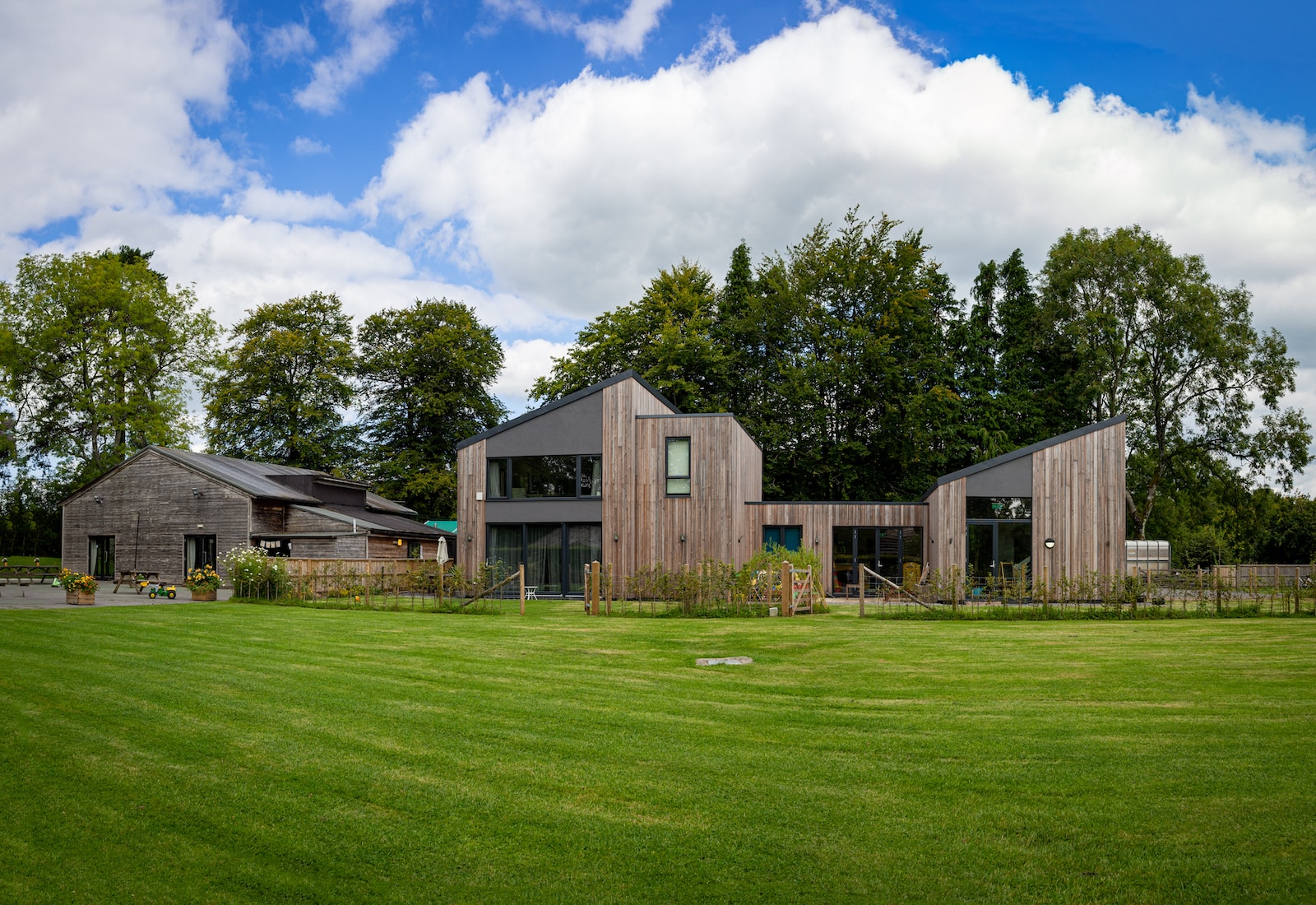Step-by-Step Guide to Lawn Renovation: From Assessment to Revitalization

Is your lawn looking lackluster and in need of some TLC? Don’t worry, we’ve got you covered. Whether you’re dealing with patchy grass, weeds taking over, or simply want a fresh start, this comprehensive guide will walk you through the entire process of transforming your lawn from drab to fab!
A beautiful and healthy lawn is not only visually appealing but also provides a welcoming space for outdoor activities and relaxation. But achieving that picture-perfect yard requires more than just regular mowing and watering. It requires a strategic approach that includes assessing the current condition of your lawn, choosing the right type of grass for your specific needs, tackling common lawn problems head-on, revitalizing the turf step-by-step, and implementing proper maintenance practices.
So grab your gardening gloves and let’s dive into this ultimate guide on how to give your lawn a much-needed makeover! By following these steps, you’ll soon be enjoying lush green grass beneath your feet and enviable curb appeal that will make all your neighbors green with envy (pun intended!). Let’s get started!
Assessing your lawn’s condition
The first step in renovating your lawn is to assess its current condition. This will help you understand what issues need to be addressed and how best to approach the revitalization process.
Start by taking a walk around your yard and closely observe the overall health of the grass. Look for signs of thinning, discoloration, or patches of bare soil. These could indicate problems such as poor soil quality, inadequate watering, or pest infestations.
Next, examine the texture and density of the grass. A healthy lawn should feel lush and soft underfoot. If it feels sparse or has an uneven texture, it may require overseeding or dethatching.
Another important aspect to evaluate is weed presence. Weeds can easily take over a struggling lawn if left unchecked. Identify any types of weeds present and consider implementing targeted weed control measures during renovation.
Testing your soil is crucial in understanding its composition and pH levels. Soil tests provide valuable information about nutrient deficiencies that might be hindering turf growth. Based on these results, you can then apply fertilizer or other amendments specific to your lawn’s needs.
Consider factors such as sun exposure and drainage patterns in your assessment process. Some areas may receive too much shade for certain grass varieties to thrive while others may suffer from poor drainage causing waterlogged conditions.
By thoroughly assessing your lawn’s condition, you’ll gain insights into its strengths and weaknesses which will inform your decisions throughout the renovation process.
Choosing the right type of grass for your lawn
Choosing the right type of grass for your lawn is a crucial step in the renovation process. It will ultimately determine the overall look and feel of your revitalized lawn. Consider factors such as climate, soil conditions, and how much sunlight your lawn receives throughout the day.
For warm-season grasses, popular options include Bermuda grass, Zoysia grass, and St. Augustine grass. These varieties thrive in hot climates and require less water than cool-season grasses.
If you live in an area with cooler temperatures, cool-season grasses like Kentucky bluegrass or fescue may be more suitable. These types of grass have better tolerance for cold weather and can maintain their green color even during colder months.
Another factor to consider is how much foot traffic your lawn typically experiences. If you have a lot of activity on your lawn from pets or children playing, it’s important to choose a durable variety that can withstand heavy use.
Once you’ve determined the best type of grass for your lawn’s specific needs, it’s time to prepare for planting or laying down new sod. This may involve removing any existing vegetation or weeds, aerating the soil to improve drainage and root growth, and ensuring proper irrigation systems are in place.
Remember that choosing the right type of grass is just one piece of the puzzle when it comes to renovating your lawn. Proper maintenance practices such as regular mowing, watering correctly (avoiding overwatering), fertilizing appropriately based on soil tests results—will all contribute to keeping your newly revitalized lawn looking its best year-round.
By following this step-by-step guide to assess and revitalize your lawn properly from start to finish—with careful consideration given at each stage—you’ll be well on your way towards achieving a lush green oasis outside your home! So roll up those sleeves because there’s work ahead—but with effort comes reward—and soon enough you’ll be enjoying a beautiful outdoor space that you can truly be proud of.
Revitalizing your lawn step-by-step
Revitalizing your lawn can seem like a daunting task, but with the right steps and a little bit of effort, you can bring your grass back to life. Here is a step-by-step guide to help you achieve that lush, healthy lawn you’ve always wanted.
Start by addressing any underlying issues that may be affecting the health of your lawn. This could include compacted soil, weeds or pests. Take the time to properly diagnose these problems so that you can effectively treat them and prevent further damage.
Once you have addressed any issues, it’s time to prepare your soil for new growth. Aerating the soil will loosen it up and allow air, water and nutrients to reach the roots of your grass more easily. You can use a garden fork or rent an aerator for larger areas.
After aerating, it’s important to replenish any nutrients that may be lacking in your soil. Consider getting a soil test done to determine what specific amendments are needed for optimal growth. Adding organic matter such as compost or well-rotted manure can also improve the overall health of your lawn.
Next, choose the right type of grass seed for your region and specific conditions. Whether you need a variety that is drought-tolerant or shade-resistant, make sure to do some research before making a decision.
When planting the seed, follow the instructions on the packaging regarding seeding rates and watering schedules. It’s crucial not to overwater during this stage as it can lead to shallow root development.
As your new grass begins to grow, monitor its progress closely and continue with regular maintenance practices such as mowing at an appropriate height (usually around 2-3 inches) and fertilizing as needed.
Remember that revitalizing your lawn takes time and patience – don’t expect overnight results! But with consistent care and attention using these step-by-step guidelines tailored specifically for revitalization from assessment onwards – success is within reach.
Maintaining a healthy lawn
Maintaining a healthy lawn is essential for its long-term vitality and beauty. Here are some key steps to help you keep your lawn in top shape.
First, regular mowing is crucial. Set your mower blades at the correct height for the type of grass you have, and avoid cutting more than one-third of the grass blade length at a time. This promotes healthy growth and prevents stress on the turf.
Next, watering your lawn properly is important. Deep, infrequent watering encourages deep root growth and drought tolerance. Watering early in the morning allows time for the grass blades to dry before evening, reducing disease risk.
Fertilizing regularly provides vital nutrients that support strong roots and lush greenery. Choose a fertilizer with balanced ratios of nitrogen (N), phosphorus (P), and potassium (K) appropriate for your grass type.
Weeds can be unsightly and compete with your lawn for resources. Regularly inspect your yard for weeds and remove them promptly by hand or use an appropriate herbicide if necessary.
Aerating your lawn helps alleviate soil compaction, allowing water, oxygen, and nutrients to reach grassroots more effectively.
By following these maintenance practices consistently throughout the year, you can ensure that your lawn remains healthy and vibrant.
Conclusion
Taking the time to assess and revitalize your lawn can make a world of difference in its overall health and appearance. By following this step-by-step guide, you’ll be well on your way to achieving a lush and vibrant lawn that will be the envy of your neighborhood.
Remember, it all starts with assessing your lawn’s condition. Take note of any problem areas or issues that need attention. Then, choose the right type of grass for your specific climate and needs.
Once you’ve selected the perfect grass, it’s time to begin revitalizing your lawn. From removing weeds and thatch to aerating the soil and overseeding, each step plays a crucial role in promoting healthy growth.
Don’t forget about regular maintenance! Proper watering, mowing at the correct height, fertilizing as needed, and addressing any pest or disease issues will keep your newly renovated lawn looking its best year-round.
So go ahead – roll up your sleeves and get ready to transform your lackluster lawn into an oasis of green beauty. With this comprehensive guide by your side, you’ll have everything you need to achieve stunning results from assessment to revitalization!


